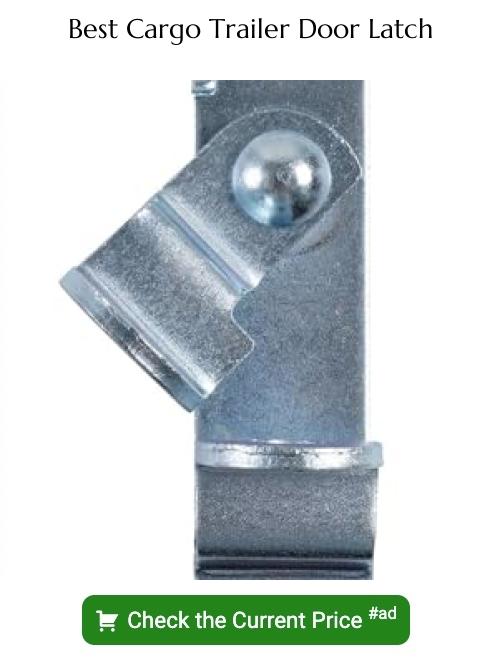Last updated on
Discover the step-by-step process to building a sturdy and functional cargo trailer door with our comprehensive guide that simplifies the task for both beginners and experienced DIY enthusiasts.
Are you a DIY enthusiast looking to build your own cargo trailer? One of the most important aspects of any trailer is the door. The door not only provides access to your cargo but also keeps it secure during transportation.
Building a cargo trailer door may seem like a daunting task, but with the right tools and instructions, it can be accomplished easily. In this article, we will guide you through the step-by-step process of building your own cargo trailer door.
So grab your tools and let’s get started!
Key takeaways:
- Choose the right door material: aluminum, steel, or wood.
- Measure and size your door accurately.
- Decide on the style of your door: swing-out or roll-up.
- Gather the necessary tools and materials.
- Attach hinges, latches, and gas struts for smooth function.
Table of Contents
Selecting the Right Door Material
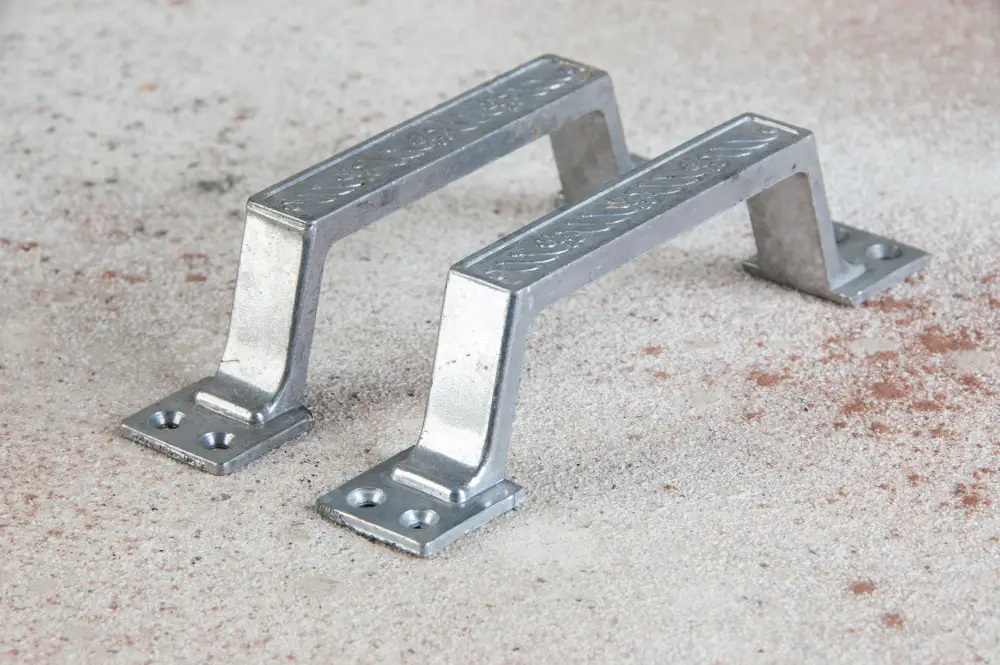
The most common materials used for cargo trailer doors include aluminum, steel, and wood. Each of these materials has its own advantages and disadvantages.
Aluminum is a popular choice due to its lightweight nature and resistance to rusting or corrosion. It is also easy to maintain and can be painted in any color you desire.
Steel doors are heavier than aluminum but offer better security as they are more difficult to break into. They also provide better insulation against temperature changes compared with other materials.
Wooden doors have been around since the beginning of time; they offer excellent insulation properties while being aesthetically pleasing at the same time. Ultimately, your choice will depend on factors such as budget constraints, durability requirements (how often you use your trailer), weather conditions in which you operate (rainy or humid areas), among others.
Measuring and Sizing Your Door

This step is crucial as an ill-fitting door can compromise the security of your cargo during transportation. Start by measuring the height and width of the opening where you plan to install your door.
Ensure that you take accurate measurements, leaving enough space for any weather stripping or insulation that may be required.
Next, determine how thick your door needs to be based on its intended use and weight capacity requirements. A thicker panel will provide more strength but also add extra weight which could affect fuel efficiency if not properly balanced with other components in the trailer.
It’s important to note that some materials like wood may expand or contract due to temperature changes so make sure you account for this when sizing up a wooden panel.
Door Style Options

The most common styles include single swing-out doors, double swing-out doors, and roll-up doors. Single swing-out doors are the simplest option and consist of a single door that swings open from one side.
Double swing-out doors provide wider access to your cargo by opening from both sides like French Doors.
Roll-up or overhead garage-style cargo trailer door is another popular option for those who want easy access without sacrificing space inside the trailer. Roll-up trailers have a track system on either side of the doorway that allows them to be rolled up into a compact bundle when not in use.
Tools and Materials Needed

Here is a list of what you’ll need:.
Tools:
- Measuring tape
- Circular saw or jigsaw
- Drill with drill bits and screwdriver bits
- Clamps
- Square
- Hammer
- Materials:
- Plywood or aluminum sheeting (depending on preference)
- 2×4 lumber for framing the door panel and frame reinforcement.
- Weather stripping for sealing gaps between the door panel and frame.
- Insulation material (optional) to maintain temperature control inside your trailer.
Make sure that all of these items are readily available before starting construction.
Preparing the Trailer Door Frame
This involves removing any old or damaged doors and cleaning the frame thoroughly. You’ll also need to ensure that the frame is square and level before proceeding with construction.
To begin, remove any screws or bolts holding the old door in place using a screwdriver or wrench. Carefully lift out the old door panel and set it aside for disposal.
Next, use a wire brush to clean off any rust or debris from around the edges of your trailer’s doorway. If there are areas of significant damage on your existing framing material (such as rotting wood), these should be repaired before continuing with installation.
Constructing the Door Panel
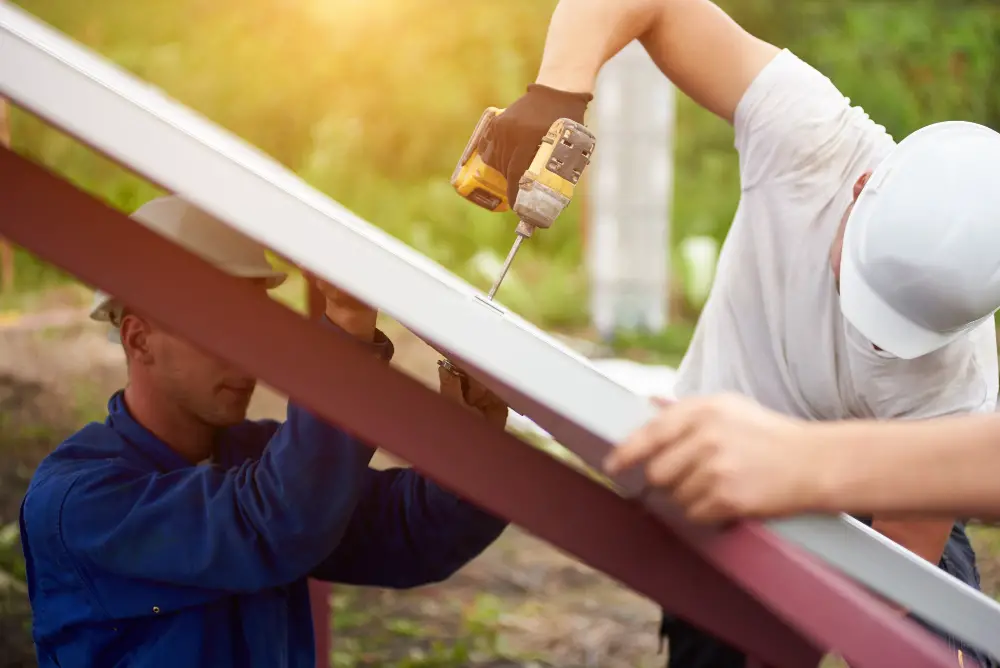
Begin by measuring and cutting your chosen material to fit the size of your trailer opening. Make sure that you leave enough space around the edges for weather stripping and insulation.
Next, assemble a frame using 2x4s or metal tubing that will hold together all of your panels securely. The frame should be slightly smaller than the overall dimensions of your door panel so that it fits snugly inside.
Attach each panel to this frame with screws or rivets, making sure they are evenly spaced apart from one another. Once all panels are attached securely in place on their respective frames, sand down any rough edges before moving onto installing weather stripping and insulation.
Installing Weather Stripping
Installing weather stripping around the edges of the door will help prevent water, dust and other debris from entering your trailer. Weather stripping also helps to keep out drafts and maintain a consistent temperature inside the trailer.
To install weather stripping on your cargo trailer door, start by measuring each side of the frame where you want to place it. Cut strips of adhesive-backed foam or rubber material according to these measurements using a utility knife or scissors.
Next, peel off one side of the backing paper from each strip and carefully press them onto their respective sides on top of any existing sealant if present. Make sure they are aligned properly before pressing down firmly along their entire length for good adhesion.
Insulation for Temperature Control
Insulating your door will help regulate the temperature inside the trailer and prevent heat or cold from escaping through gaps in the door. The type of insulation you choose will depend on your specific needs and budget.
One popular option for insulating a cargo trailer door is foam board insulation. This type of insulation comes in large sheets that can be cut to fit the size of your door panel.
Foam board has excellent thermal resistance properties, making it ideal for keeping temperatures consistent inside your trailer.
Another option is fiberglass batts, which are made from spun glass fibers and come in rolls or pre-cut panels that can be easily installed between studs or framing members within a wall cavity.
Adding Hinges and Latches
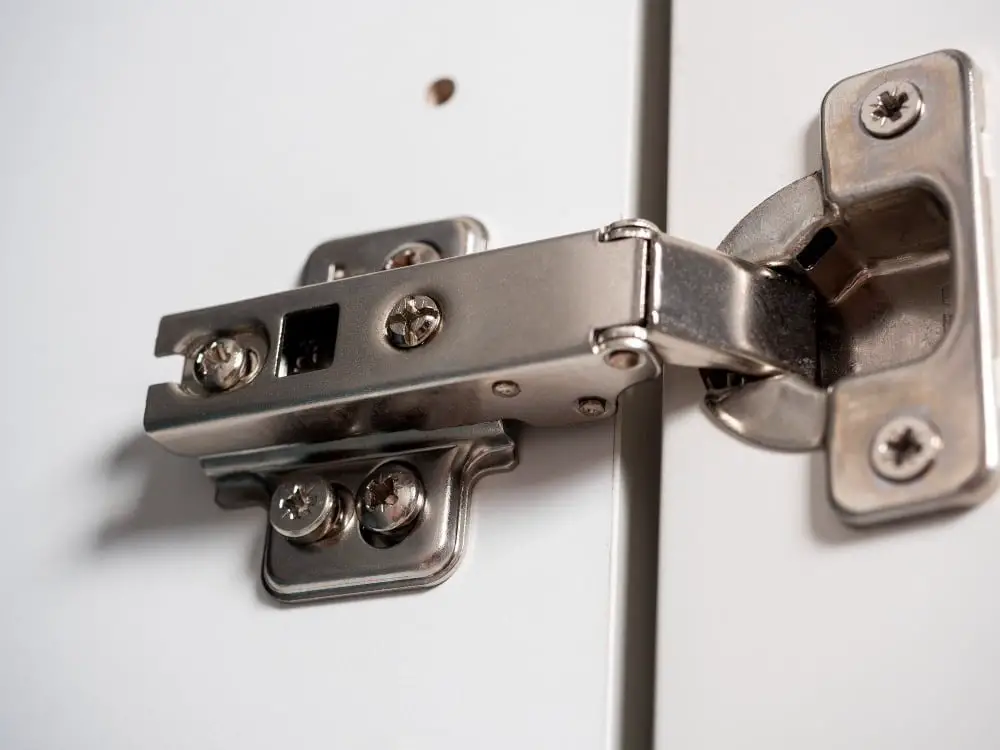
Hinges are essential for attaching the door to your trailer frame, while latches keep your cargo secure during transportation. When selecting hinges and latches, ensure that they are strong enough to support the weight of your door and withstand constant use.
To install hinges on a cargo trailer door:.
- Position each hinge on either side of the trailer opening where you want them installed.
- Mark screw holes with a pencil or marker.
- Pre-drill pilot holes in both sides of each hinge using an appropriately sized drill bit.
- Securely attach one half of each hinge onto its corresponding location on either side of the opening using screws.
Next up is installing latch hardware which can be done by following these steps:.
- ) Choose a suitable latch type based on how frequently you will need access to your cargo
- ) Measure out where exactly you want it placed
- ) Drill pilot holes into both sides at marked locations
- ) Attach one half (usually female part )of latch hardware onto its corresponding location with screws
- ) Install male part accordingly
Installing Door Hinges
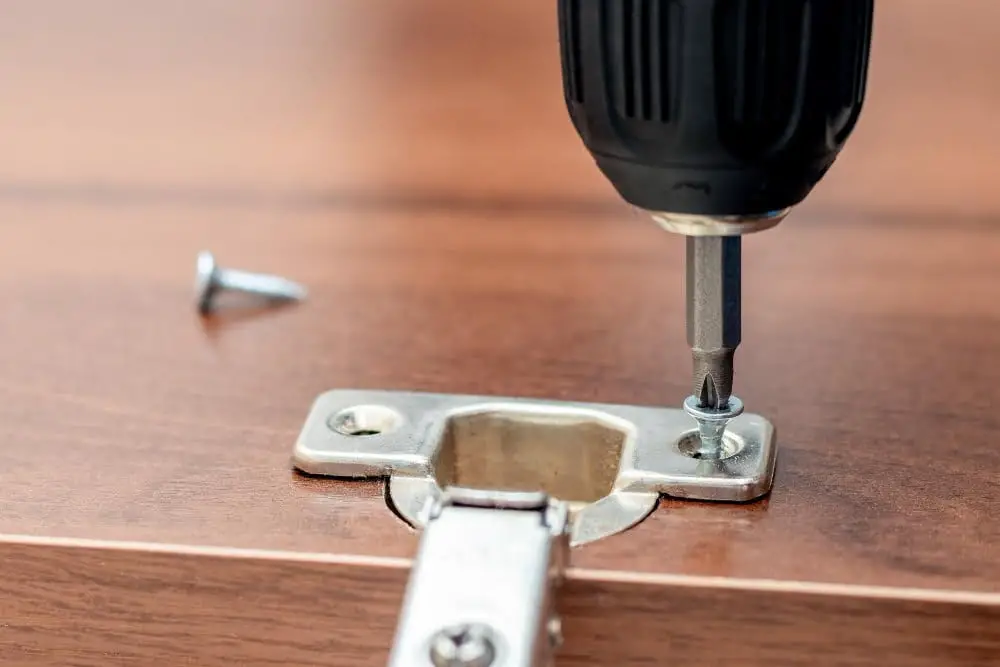
Hinges are essential for attaching the door to the frame and allowing it to swing open and closed smoothly. To begin, position your hinges on either side of the door panel at equal distances from top to bottom.
Using a pencil or marker, mark where each hinge will be attached on both sides of the trailer frame as well. Pre-drill holes in these marked spots using a drill bit that matches with screw size.
Next, attach one half of each hinge onto its corresponding spot on either side of your cargo trailer’s opening using screws provided with them (usually included). Then align other halves onto their respective positions over pre-drilled holes in previously installed part(s) before securing them into place by driving screws through all parts involved until they’re tight enough not move around when tested by hand.
Securing the Door With Locks

One of the most effective ways to do this is by installing locks on the door. There are various types of locks available in the market, including padlocks, deadbolts and combination locks.
When selecting a lock for your cargo trailer door, consider its strength and durability as well as ease of use. A good quality lock should be able to withstand harsh weather conditions and prevent unauthorized access.
To install a lock on your cargo trailer door:.
- Choose an appropriate location for the lock.
- Drill holes into both sides of the locking mechanism.
- Insert bolts through each hole from one side then attach nuts onto them from inside using pliers or wrenches.
- Tighten all nuts until they are snug but not too tight that they strip threads or damage surfaces around them
- Test out how easily you can open/close doors with new hardware installed before finalizing installation process
Attaching Gas Struts or Springs
These components help in opening and closing the door smoothly without any hassle. Gas struts are a popular choice as they provide consistent support throughout the opening and closing process.
To install gas struts, first determine where you want to place them on your trailer door. Typically, two or three gas struts are used depending on the size of the cargo trailer door.
Next, measure and mark where you will drill holes for mounting brackets that hold each end of the strut in place. Make sure that these brackets align with each other so that there is no twisting when pressure is applied.
After drilling holes for mounting brackets into both sides of your cargo trailer’s frame (or wherever else necessary), attach one end of each strut onto its corresponding bracket using bolts provided by manufacturer instructions while holding it firmly against its mount point until secure enough not to move around too much during installation process; then repeat this step with all remaining ends until all four corners have been secured properly before testing out how well everything works together!.
Testing the Cargo Trailer Door

Testing ensures that the door functions properly and securely holds your cargo in place during transportation.
To begin testing, open and close the door several times to ensure smooth operation. Check for any obstructions or misalignments that may cause difficulty when opening or closing the door.
Next, check if there are any gaps between the frame and weather stripping by shining a flashlight around all edges of the closed door from inside of trailer while someone else shines a light on outside. If there are gaps present then adjust accordingly until they disappear completely.
Try pushing against different parts of your newly installed cargo trailer doors with varying degrees of force to see how well they hold up under pressure. This will help you identify weak spots in construction so that necessary adjustments can be made before loading up for transport.
Troubleshooting Common Issues

One of the most common problems is a door that doesn’t close properly or has gaps around the edges. This can be caused by incorrect measurements or an uneven frame.
To fix this issue, you will need to adjust the hinges and ensure they are aligned correctly.
Another problem could be difficulty opening and closing the door due to friction between it and its frame. In such cases, adding lubrication on hinges can help reduce friction.
If your cargo trailer is exposed to extreme weather conditions like rain or snowfall, water might seep through any gaps in your poorly installed doors causing damage inside of it over time; hence sealing all possible openings with weather stripping becomes crucial.
Lastly, if there’s a rattling sound coming from your cargo trailer while driving on rough terrain roads – check for loose screws in both frames (door & main) as well as latches/hinges which may have come undone during transit.
Maintaining and Repairing Your Door
Regular maintenance will help prevent any issues from arising and keep the door functioning properly. Inspect the hinges, locks, weather stripping, gas struts or springs for wear and tear periodically.
Lubricate moving parts with a silicone-based lubricant as needed.
If you notice any damage or malfunctioning of your cargo trailer door during inspection or use, don’t hesitate to repair it immediately before further damage occurs. Repairing minor damages such as scratches can be done easily by sanding down the affected area and repainting with matching paint color.
For more significant repairs like replacing damaged panels or fixing broken hinges/latches/locks/gas struts/springs etc., consult a professional if you are not confident in doing so yourself.
Door Interior and Exterior Finishes

The interior and exterior finishes of your door can make a big difference in its appearance and durability. For the exterior finish, you may want to consider using a weather-resistant paint or coating that will protect against rust and corrosion.
You could also add decals or graphics to personalize your trailer.
For the interior finish, insulation is an important consideration for temperature control during transportation. Once insulated, you can cover it with plywood panels or other materials like carpeting or vinyl flooring for added protection against wear-and-tear.
Another option is adding soundproofing material if noise reduction is necessary while driving on rough roads.
Customizing Your Cargo Trailer Door

There are many ways you can customize your door, depending on the type of cargo you will be transporting and how often you will be using it.
One popular customization option is adding windows or vents to the door panel. This allows for better ventilation inside the trailer, which can help prevent moisture buildup and keep temperatures regulated.
You may also want to consider adding a screen over any window or vent openings for added protection against insects.
Another customization option is installing additional storage compartments on the interior side of the door panel. These compartments can hold small tools or equipment that need quick access while working with your cargo.
If security is a concern, there are several options available such as reinforced steel plates around locks or tamper-proof hinges that make it difficult for thieves to break in through doors.
If aesthetics matter most then customizing with graphics wraps could give an eye-catching look while promoting brand awareness at events like trade shows where trailers are used as mobile billboards.
Customizing Door With Accessories
There are many options available in the market that can help you customize your door according to your needs. For instance, if you frequently transport heavy items, adding a grab handle or a step will make accessing the trailer easier and safer.
You can also install vents for better air circulation inside the trailer or LED lights for improved visibility during night-time driving.
Another popular accessory is an awning that provides shade and shelter from rain while loading or unloading cargo. If security is a concern, consider installing an alarm system on your cargo trailer door that alerts you when someone tries to break-in.
Customizing with accessories not only enhances functionality but also adds aesthetic appeal to your cargo trailer door. You can choose from various finishes such as chrome plating or powder coating depending on what suits best with the overall look of your vehicle.
Safety Tips and Best Practices
Here are some tips to keep in mind:.
- Wear protective gear such as gloves and eye protection when using power tools.
- Use caution when handling heavy materials or equipment.
- Make sure the trailer is on level ground before beginning any work.
- Double-check all measurements and cuts to ensure accuracy and prevent mistakes that could compromise the integrity of your door.
- Follow manufacturer instructions for all tools, materials, and hardware used in construction.
Once your cargo trailer door is complete, it’s important to maintain it properly by regularly inspecting hinges, latches, locks or gas struts/springs for wear or damage that may affect their performance.
By following these best practices throughout the process of building your own cargo trailer door you can ensure not only its longevity but also safe operation during transportation of goods from one place to another with ease!.
FAQ
What are enclosed trailer doors made of?
Enclosed trailer doors are made of materials such as aluminum, luan, ironwood, with options like aluminum vents, kickpanels, treadplate, and can be foam-filled with polyurethane or kept hollow.
Is it cheaper to build your own cargo trailer?
Yes, building a cargo trailer is often cheaper than buying one, and it allows for more customization options.
What are the dimensions of a cargo trailer side door?
The dimensions of a cargo trailer side door are 32 inches in width and 66 inches in height.
Can you build your own enclosed trailer?
Yes, you can build your own enclosed trailer for about half the price of a ready-made one by using a utility trailer with wheels and constructing the floor, wall, roof, and a handmade wooden door.
What are the essential components and materials needed for constructing a cargo trailer door?
Essential components and materials for constructing a cargo trailer door include hinges, door frame, door panel, latch system, sealants, and proper fasteners.
How can one ensure the security and durability of a self-built cargo trailer door?
To ensure the security and durability of a self-built cargo trailer door, one should use high-quality materials, sturdy locks, and proper weather-sealing, following industry standards and best practices.
What are the common challenges faced when building a cargo trailer door, and how can they be mitigated?
Common challenges in building a cargo trailer door include alignment, sealing, and security, which can be mitigated through careful measurements, using quality materials, and installing reliable locking mechanisms.
